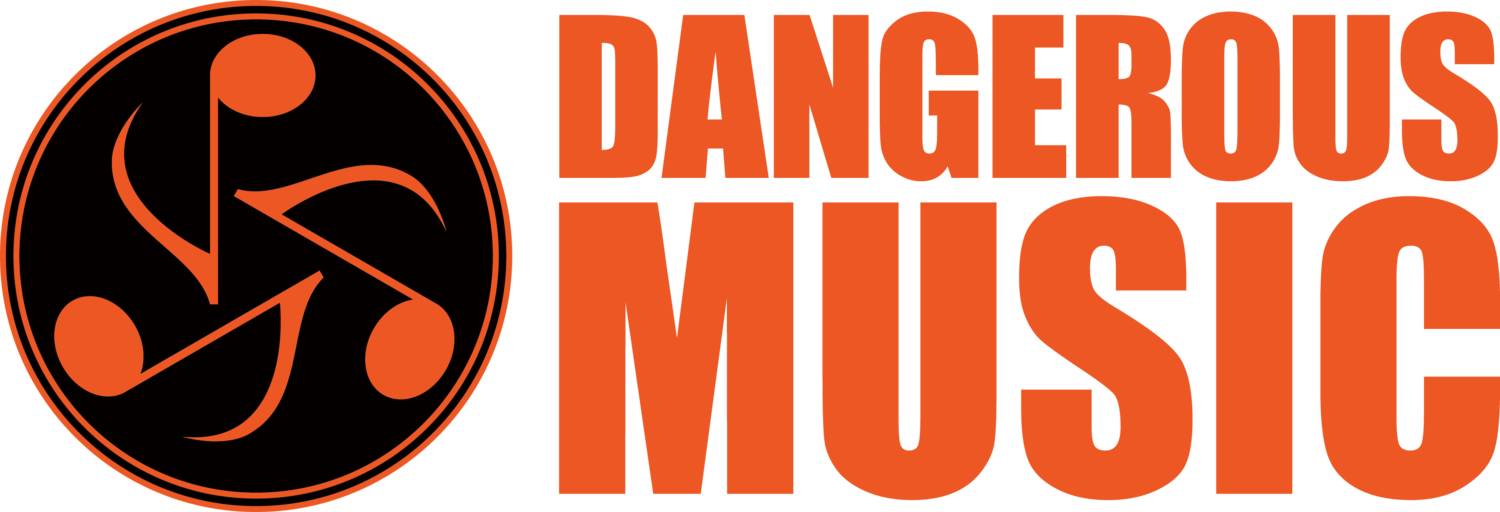COOL TOOLS FOR DJ’S- SOURCE REVIEW FROM ELECTRONIC MUSICIAN
by Craig Anderton
Dangerous Music’s Source is an unusual product with many applications, including DJing. Geared for portability, Source monitors and routes a variety of input sources via high-end conversion, noiseless switching, and superb headphone amps. Its size and form factor suggest laptop-based audio production, but it’s equally at home in small studios.
Ins and Outs
Source has independent monitoring sections for headphones and speakers. Both have buttons to monitor any or all of four shared inputs: stereo XLR+1/4″ combo analog ins, stereo minijack, AES/SPDIF XLR digital in (with associated passthrough connector), and USB for stereo audio output from Mac/Windows machines.
Two front-panel 1/4″ headphone outs share a single volume control, and two separate speaker pair outs (XLR and 1/4″) have their own shared volume control, too. An additional, fixed-level line out mirrors the speaker section’s selected set of inputs. The speaker outs are designed for powered monitors, so they’re essentially beefy line outs.
Interestingly, Source includes two power connectors that match the included global wall wart. Presumably a single adapter couldn’t power two Sources, but Dangerous hints at possible future accessories.
Monitoring
The speaker section can switch between two sets of speakers, but all buttons—input and speaker selectors—are set up cleverly so they can toggle momentarily or latch. Furthermore you can enable input and speaker buttons within their groups simultaneously, or program them so enabling one in the group disables the others.
Using It
You can bring in stereo audio from a controller/interface, or via USB from your computer, and send it (with level adjustment) to the 1/4″ TRS outs for booth powered monitors and to the XLR main outs. The fixed-level line out is ideal for recording. Meanwhile, you can monitor an iOS device or similar player from the headphones without sending the signal to the main out, but then enable it to the speakers when appropriate. Better yet, send a DJ program’s cue output to the computer’s 1/8″ audio output jack, and patch it to Source’s second analog in. (Simply aggregate interfaces with a Mac; with Windows, use ASIO4ALL to enable the USB ASIO and WDM onboard audio simultaneously.)
Given the Dangerous pedigree and design, it probably goes without saying, but I’ll say it anyway: The sound quality is somewhere beyond excellent. Mixing with Source becomes a superior audio experience.
Final Mix
While it’s not difficult to route cue and main mixes separately, I’d love to see four channels of USB I/O for this; and the ability to set separate levels for the two speaker outs would be convenient for booth setups. However, Source isn’t just a DJ tool, but has multiple studio uses—feed in a digital mixer or audio interface output (or computer USB out) for distribution to the two headphones and speakers, switch between speakers for comparison, send one set of speaker outs to monitors and the other set to a sub, switch between a reference CD and your master out, record a mix back into a DAW by routing the line outs to two audio interface inputs, and the like. Ultimately, “going to the Source” means routing and monitoring that are portable enough for laptop DJs, but robust enough for studio work.



